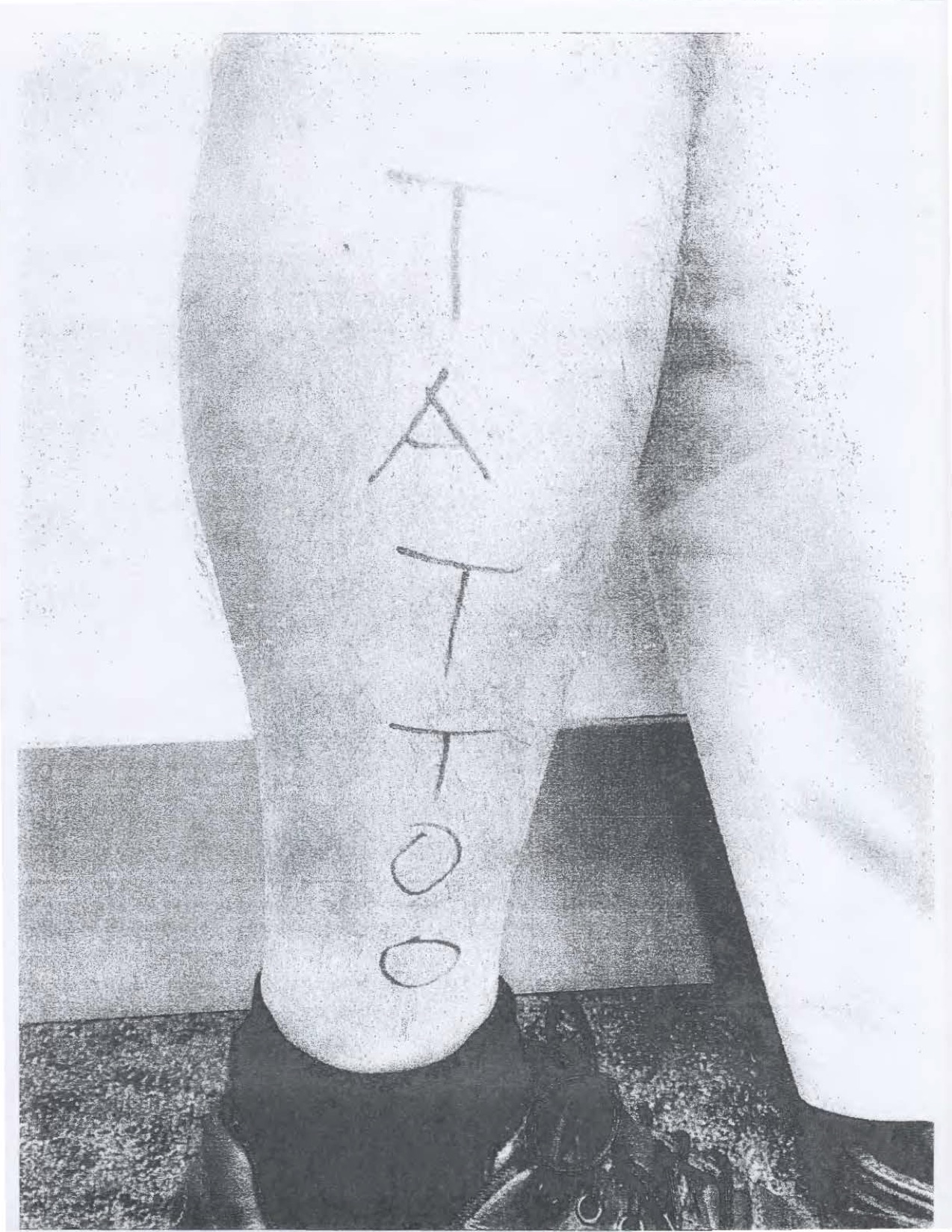
Well, this is a first.
In response to an EFF investigation that uncovered deeply troubling research practices by the National Institute for Technology & Standards (NIST), a senior federal scientist stripped off his clothes, had another scientist draw all over his skin with washable markers, and then posed for the camera. Those images—obtained by EFF through a Freedom of Information Act lawsuit—illustrate federal officials’ absurd reaction to an EFF investigation that showed the research exploited prisoners while bypassing ethical oversight measures.
As EFF revealed in 2016, NIST researchers partnered with the FBI on a multi-year program to advance the state of the art of tattoo recognition technology—computer algorithms that automatically identify someone by their tattoos and even identify the meaning of those tattoos. NIST documentation explicitly stated that one goal was to use this automated technology to identify a subject’s “affiliation to gangs, sub-cultures, religious or ritualistic beliefs, or political ideology”—raising major First Amendment concerns. In addition, EFF’s research discovered that NIST researches had used—and distributed to corporate and institutional researchers—images of thousands of prisoners’ tattoos without their consent and without going through the ethical oversight process that protects prisoners from being unwitting research subjects. Following EFF’s report, NIST scrambled to retroactively change the nature of the research by removing all references to religion from its already published materials and redacting tattoo images previously available on its website.
One of the main outputs of NIST’s efforts to improve automated tattoo recognition was its creation of a series of “Best Practices” for collecting images of tattoos optimized for algorithmic recognition (e.g. proper lighting, framing, etc). NIST created a poster describing those best practices, which included many images of prisoner tattoos containing religious imagery, as well as tattoos that included portraits and names of inmates’ family members—despite officials claiming that the tattoo images contained no personal information.
EFF is not releasing the original poster because of the need to protect the privacy of the prisoners whose tattoos should never have been included, much less shared with third parties. Instead, we have blurred the images and added descriptors.

In essence, NIST had provided a guide to law enforcement agencies on how to collect problematic images that could be used to target people based on their beliefs or reveal their familial relationships. Regardless of NIST officials’ intent, the poster should never have been created using real images of inmates.
Rather than retract the document in full and cancel the program, NIST researchers embarked on a wild attempt to salvage their Best Practices guidance. NIST replaced the images taken from prisoners with pictures of a research manager who had the word “TATTOO” drawn in marker all over his skin.
Compare the original poster to the version distributed after EFF issued its report.


The new document is as embarrassing as it is mystifying. If this was a legitimate attempt to address EFF’s concerns about misusing prisoners as research subjects, there were clearly better ways address them that would not require a federal employee to pose shirtless. For example, NIST could have compensated a professional model or better yet, not conducted the project at all. While we are glad to see that the prisoner tattoos have been removed from NIST’s poster, the updated poster was not the way to correct the underlying problems with the research program.
Records obtained by EFF further show that NIST removed 28 images that may have contained personal information from the dataset it provides to external organizations that are experimenting with tattoo recognition technology. However, there is no indication that NIST asked external researchers who had already received the dataset to also delete these sensitive images.
EFF's lawsuit against NIST and the FBI for records related to the “Tattoo Recognition Technology Challenge” (TATT-C) and “Tattoo Recognition Technology Evaluation” (TATT-E) programs is ongoing. For more information, visit the Tattoo Recognition page on EFF’s Street-Level Surveillance hub.








